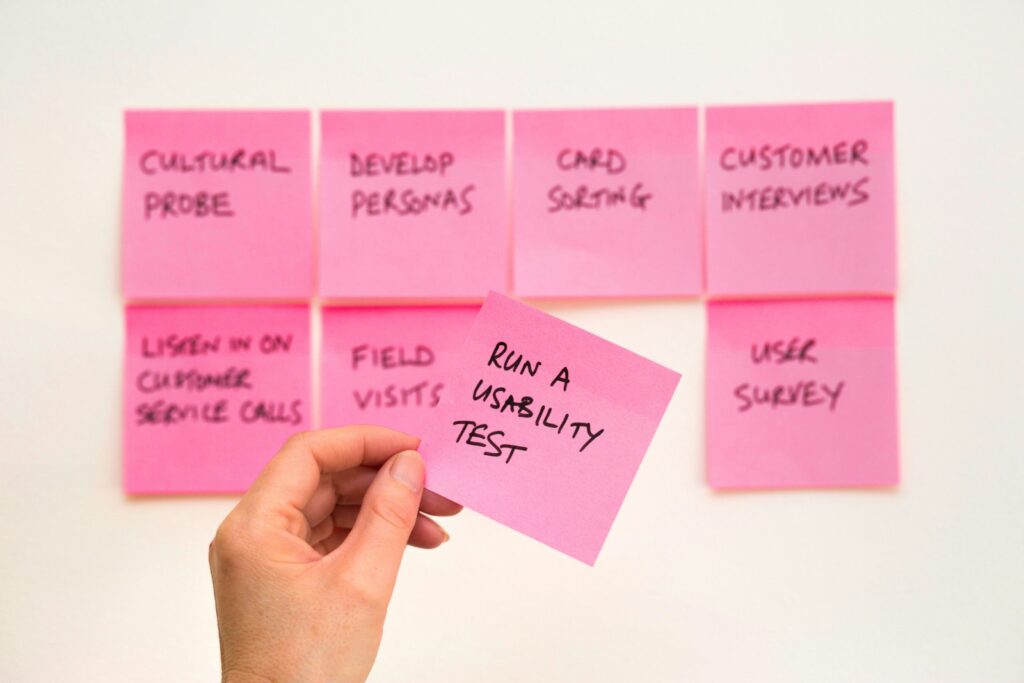A/B Testing in Quizzes: What It Is and How to Make the Most of It

In the realm of digital optimization, few methodologies offer the concrete, data-driven insights that A/B testing provides. When applied specifically to educational and marketing quizzes, this experimental approach becomes a cornerstone of strategic improvement. A/B testing transforms quiz development from a speculative art into a precise science, allowing creators to methodically enhance user experience and achieve measurable outcomes through controlled experimentation.
What Is A/B Testing? 📱
At its simplest, A/B testing is like offering two different versions of something to see which one works better. Imagine you have two different ice cream flavors and want to know which one people prefer – you’d give some people flavor A and others flavor B, then count which one got more positive reactions.
In the digital world, A/B testing (also called split testing) works the same way. You create two versions of your quiz that differ in just one aspect – maybe one has blue buttons and the other has green buttons. You then show version A to half your audience and version B to the other half. By measuring which version gets better results (like more completions or leads), you discover what actually works rather than just guessing.
For those who prefer a more technical definition: A/B testing is a systematic experimental methodology where two variants of a single variable are presented to different segments of users simultaneously to determine which version performs more effectively according to predetermined metrics. Unlike intuition-based design decisions, A/B testing provides empirical evidence of what actually works with your specific audience.
In other words, instead of making changes based on gut feeling or assumptions, A/B testing gives you real data about what your audience truly prefers.
In the context of quizzes, here’s a real-world example anyone can understand: A university admissions department creates an online quiz for prospective students. They make two versions:
- Version A: Starts by asking for name, age, and contact information, then shows quiz questions
- Version B: Shows the quiz questions first, and only asks for personal information at the end
When they track how many people finish the quiz, they find that Version B gets 32% more completions. This teaches them something valuable: people prefer to engage with content before sharing their personal details. This simple change – just moving when they ask for information – made a big difference in results.
The basic A/B testing process is straightforward:
- Create two versions: a current version (A) and a new version (B) that changes just one thing
- Show each version to similar groups of people (like splitting your website visitors in half randomly)
- Collect information about how people interact with each version (such as how many completed the quiz)
- Compare the results to see which version performed better
- Use the winning version going forward, and then test something else to keep improving
Here’s another easy-to-understand example: A professional certification program tests two ways of showing quiz results:
- Version A: Simply tells people “You passed!” or “You didn’t pass.”
- Version B: Shows a detailed breakdown of how well they did in different areas (like “85% correct in Technical Knowledge, 70% in Problem-Solving”)
The test shows that people not only like Version B more, but they’re also 45% more likely to sign up for additional courses after seeing the detailed breakdown. This shows how a small change in how you present information can have a big impact on business results.
For a more detailed guide, we recommend reading this article.

Key Elements to Test in Quizzes 🧩
There are many different parts of your quiz that you can improve through A/B testing. Think of these as different knobs you can adjust to make your quiz work better. Let’s look at the main areas where you can make changes and test the results:
Content Architecture
Quiz Structure and Flow
- Quiz length (total number of questions presented)
- Question sequencing and logical progression
- Adaptive pathways and conditional branching logic
- Presence and design of progress indicators
For example, a marketing quiz might test whether a 5-question format achieves higher completion rates than a 10-question format, or whether revealing the total number of questions upfront affects user persistence.
Question Format and Interaction Design
- Response mechanisms (multiple choice, free response, ranking)
- Answer selection options (single selection vs. multiple selection)
- Media integration (text-only vs. image-enhanced questions)
- Input methods (dropdown selections vs. slider controls)
A product knowledge quiz could compare whether questions featuring product images generate better recall than text-only descriptions, providing valuable insights for educational design.
Visual and User Experience Elements
Aesthetic Presentation
- Color schemes and visual hierarchy
- Typography and readability considerations
- Spatial layout and information density
- Integration of illustrations, animations, or interactive elements
Engagement Mechanics
- Timing elements (countdown timers vs. unlimited time)
- Feedback mechanisms (immediate vs. delayed response validation)
- Gamification elements (points, badges, leaderboards)
- Interactive components (drag-and-drop vs. click selection)
Communication Approach
Language and Tonality
- Formality spectrum (academic vs. conversational language)
- Technical depth (specialized terminology vs. simplified explanations)
- Emotional tone (serious and factual vs. lighthearted and humorous)
- Question framing (positive vs. negative construction)
Results Presentation and Follow-through
- Feedback comprehensiveness (detailed analysis vs. summarized outcomes)
- Visualization of performance (graphs, charts, comparative metrics)
- Personalization elements (tailored recommendations based on responses)
- Social integration (sharing capabilities, comparative positioning)
- Call-to-action effectiveness (next steps, resource recommendations)
For more insights about effective quiz marketing check out this article.

How to Implement Effective A/B Testing for Quizzes 🤔
Now that you understand what A/B testing is and what elements you can test, let’s walk through how to do it effectively:
1. Define Clear Objectives
First, decide exactly what you want your quiz to achieve. Having a clear goal helps you know what to measure. For instance, some common quiz objectives include:
- Higher completion rates (more people finishing your quiz)
- Improved lead generation (more email signups or contact information)
- Increased sharing (more people posting your quiz on social media)
- Better learning outcomes (people remembering information)
- More accurate data collection (getting reliable information from participants)
2. Select One Variable at a Time
To get meaningful results, only test one element per experiment. For example, if testing question format, keep all other aspects identical between versions A and B.
3. Create Statistically Valid Samples
Ensure you have enough participants for each version to achieve statistical significance. Generally, you’ll need at least 100 completions per variant, though this varies based on your audience size and expected effect size.
4. Choose Relevant Metrics
Select metrics that align with your objectives:
- Completion rate
- Time spent per question
- Drop-off points
- Sharing rate
- Lead conversion rate
- Answer accuracy (for educational quizzes)
5. Run Tests for Sufficient Duration
Allow enough time for representative data collection. For most quizzes, 2-4 weeks provide adequate data while minimizing external variables.
6. Analyze Results Thoroughly
Look beyond surface-level metrics to understand the “why” behind performance differences:
- Segment results by user demographics
- Examine patterns in user behavior
- Consider contextual factors that might influence results
7. Implement and Iterate
Apply your findings, but don’t stop there. A/B testing is most effective as an ongoing process of continuous improvement.
Common A/B Testing Mistakes to Avoid 🌟

Even with the best intentions, it’s easy to make mistakes that can lead to misleading results. Here are the most common pitfalls to watch out for:
- Testing too many things at once: If you change five things between versions A and B, you won’t know which change made the difference. Change just one element at a time.
- Ending tests too early: Don’t jump to conclusions after just a few days or with only a small number of participants. Give your test enough time to collect reliable data.
- Ignoring statistical significance: Just because version B is performing 5% better doesn’t automatically mean it’s truly better. Also, make sure the difference is statistically significant (most A/B testing tools will calculate this for you).
- Not keeping good records: Document exactly what you tested and under what conditions. This helps you build knowledge over time and avoid repeating tests.
- Treating all users the same: Different types of users might respond differently to your changes. For example, new visitors might prefer version A while returning visitors prefer version B.
- Making changes without understanding why: Don’t implement changes just because the numbers look better. Try to understand why the change worked so you can apply that insight to future improvements.
Real-World Applications of A/B Testing 🔎
- Educational Quizzes: Test different question formats to improve knowledge retention
- Marketing Quizzes: Compare call-to-action placements to increase conversion rates
- Personality Assessments: Test different result presentations to boost sharing
- Customer Surveys: Compare question phrasings to reduce abandonment rates
Conclusion 👏
A/B testing takes the guesswork out of improving your quizzes. Instead of assuming you know what will work best, you can test different options and let real user behavior guide your decisions. It’s like having a compass that always points toward better results.
By testing one element at a time—whether it’s the wording of your questions, the design of your buttons, or how you present results—you can steadily improve how people experience and respond to your quizzes. This way, each small improvement adds up over time.
Remember that A/B testing isn’t something you do once and forget about. The most successful quiz creators make testing a regular habit. Consequently, each test teaches you something new about your audience, and these insights help you continuously improve your quizzes to serve your users better and meet your goals.
Start with small, simple tests and build from there. Over time, you’ll develop a deeper understanding of what works for your specific audience and create quizzes that truly engage and convert.



